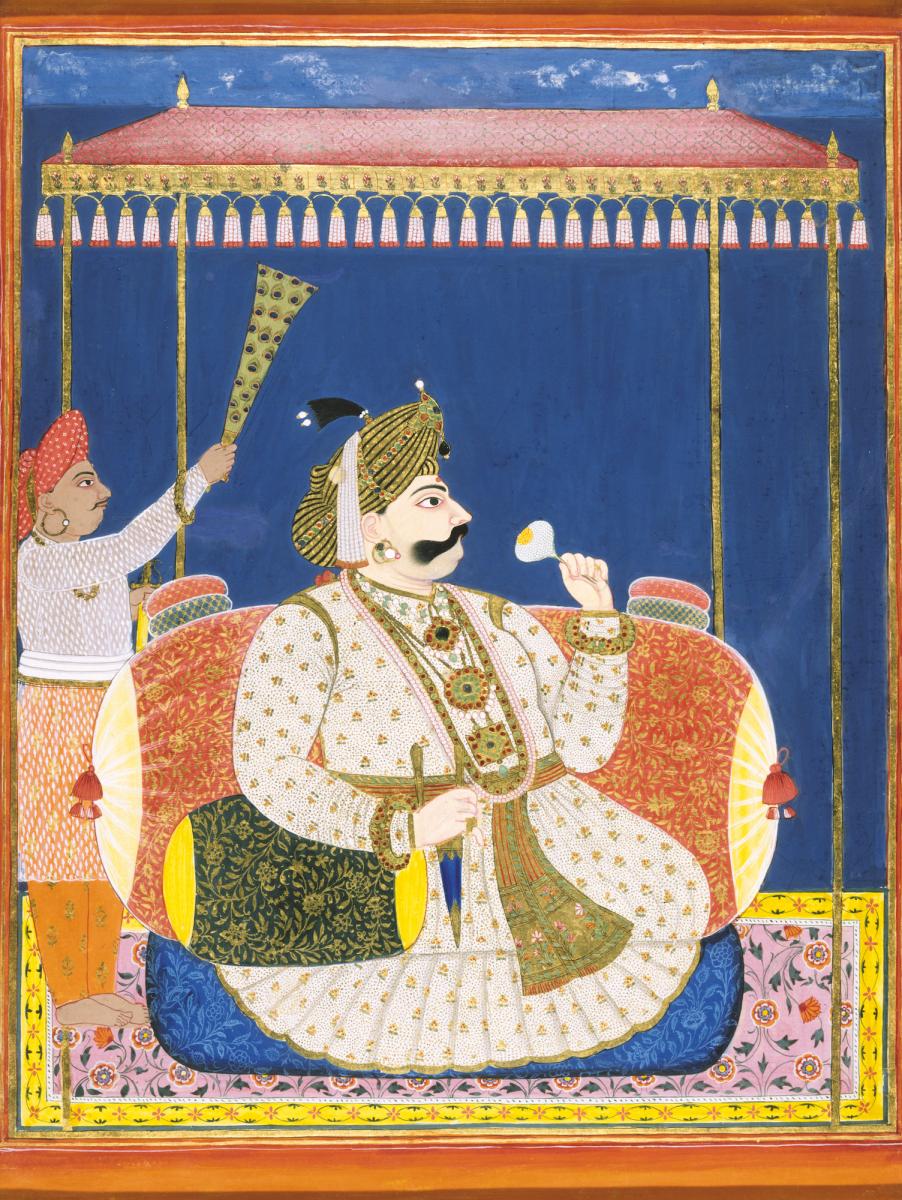This wonderful Cornish workshop and museum is dedicated to the legacy of studio pottery trailblazer Bernard Leach
Miniature Majesty
Miniature Majesty
7 Jan 2022
National Trust curator Dr John Chu reveals the story behind this tiny Indian artwork

NT IMAGES
This miniature, just 43 x 35.5cm, was made by an unknown Indian artist working in Thanjavur (Tanjore) in about 1770. The style in which it is painted, combining Indian and European forms of representation, was developed at a time of expanding colonialism on the subcontinent. Here we see the ruler of Thanjavur beneath a tasselled canopy, while an attendant stirs the air with a fly whisk. Surrounded by luxurious furnishings and clothed in fine textiles, he projects regal ease. The miniature contains precious materials and is itself an extension of the sitter’s majesty.
1. HIDDEN DETAIL
A label on the back of the picture identifies the sitter as Maharaja Pratap Singh, although more recent research suggests it depicts his son, Tulsaji of Thanjavur, who was the adopted father of Sarabhoji II. Ongoing investigation will hopefully unravel this mystery.
2. FEATHER FAN
Peacock feathers are highly significant in Indian culture. They have divine associations and represent prosperity among other desirable qualities. Here, fashioned
into a fly whisk, they are both practical and auspicious.
3. COLOURED GEMS
Green beetle wing covers (elytra) have been applied to emulate the lustre of emeralds, while the jewellery and embroidered textiles contain real gold. The vivid colour of the gouache paint has been wonderfully preserved.
4. FINE BRUSHWORK
The artist’s skill in capturing detail is especially evident in the swirling patterns of the textiles and in the features of the sitter’s face. His stubble is particularly finely rendered. It is likely that brushes with single hairs were used for parts of the picture.
5. POWER PRESENT
In 1800, Sarabhoji II of Thanjavur gave this miniature to Lady Henrietta Clive, the wife of the British East India Company’s Governor of Madras (Chennai). By such a gift, he must have hoped to strengthen his relationship with the region’s new presiding power. It came to Powis Castle in Wales after Lord and Lady Clive inherited the estate.
6. SCHOOL OF ART
This kind of painting has become known as ‘company school’ because it was developed in the18th century to appeal primarily to employees of the European East India Companies. These corporations traded in, and increasingly governed, large parts of the subcontinent. However, this portrait was painted for Indian royalty.
SEE
100 Paintings From the Collections of the National Trust by John Chu and David Taylor, published by the National Trust, featuring works from the 14th to 20th centuries; nationaltrust.org.uk/shop
This feature first appeared in the winter 2021 edition of The Arts Society Magazine, available exclusively to Members and Supporters
About the Author
Dr John Chu
Dr John Chu is Senior National Curator, Midlands (Pictures and Sculpture) at the National Trust
JOIN OUR MAILING LIST
Become an instant expert!
Find out more about the arts by becoming a Supporter of The Arts Society.
For just £20 a year you will receive invitations to exclusive member events and courses, special offers and concessions, our regular newsletter and our beautiful arts magazine, full of news, views, events and artist profiles.
FIND YOUR NEAREST SOCIETY
MORE FEATURES
Ever wanted to write a crime novel? As Britain’s annual crime writing festival opens, we uncover some top leads
It’s just 10 days until the Summer Olympic Games open in Paris. To mark the moment, Simon Inglis reveals how art and design play a key part in this, the world’s most spectacular multi-sport competition



